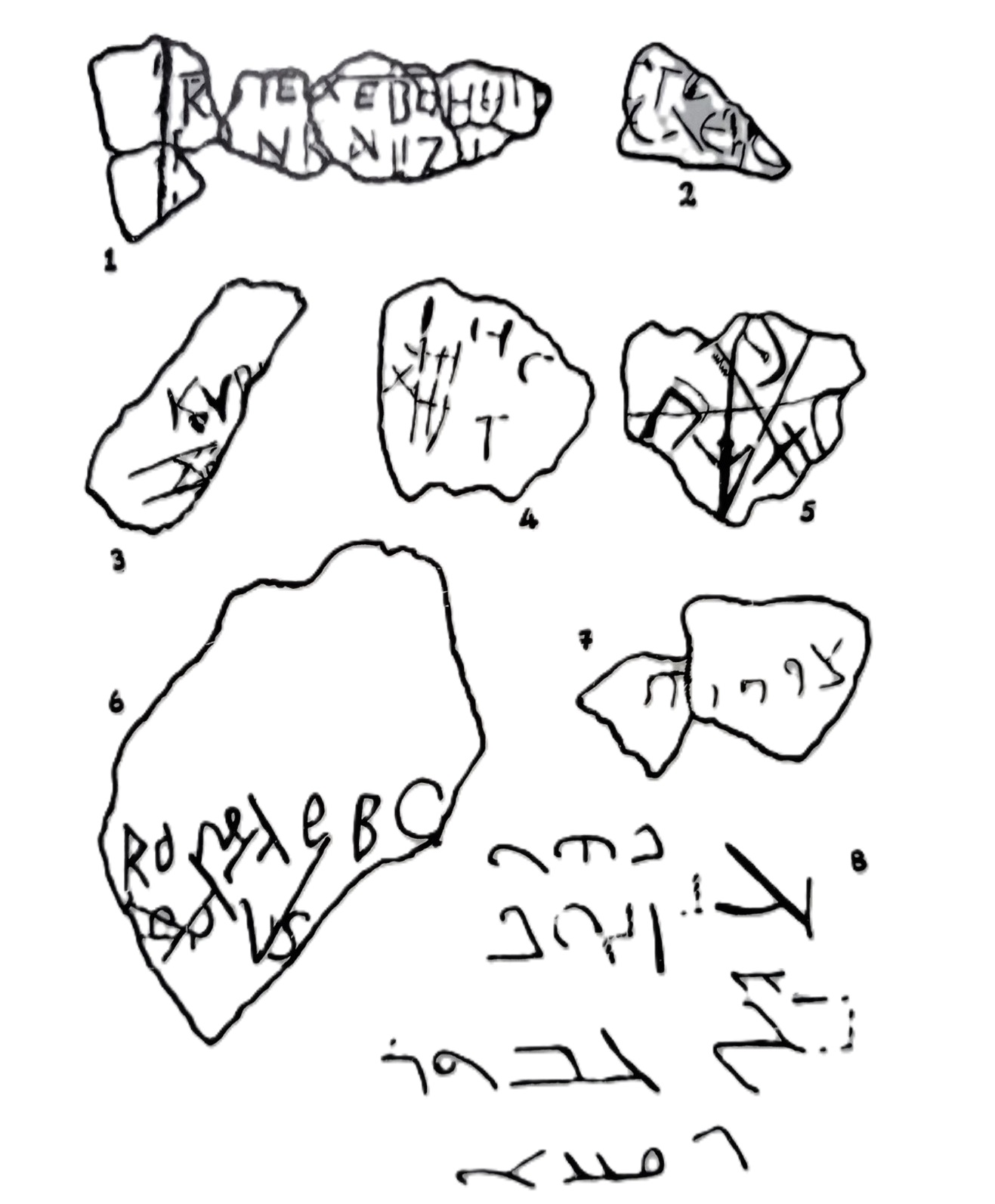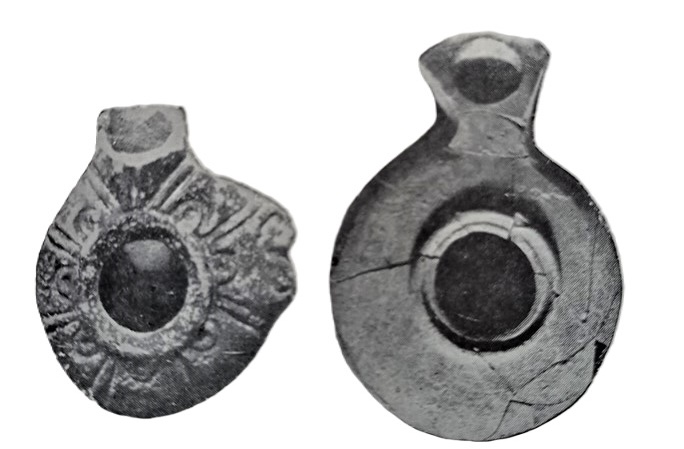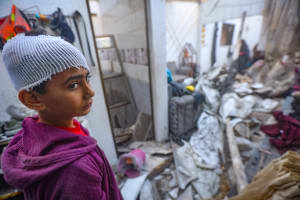Did the Apostle Peter live in Bethsaida or Capernaum?

Many Christian pilgrims visiting the holy land today are amazed to find the archaeological site known as the "House of Saint Peter." This significant location is situated within the Franciscan Catholic property amid the ancient ruins of Capernaum is now open to the public.
For years, this site was considered the sole archaeological connection to the Apostle Peter’s home during Jesus' ministry. However, Prof. R. Steven Notley, the Academic Director of the El-Araj excavations project, recently proposed a very interesting alternative. According to Notley, the only true house of Saint Peter should be located at Bethsaida, which would later become Bethsaida-Julias.
Notley identifies El-Araj (located in the northern part of the Sea of Galilee) as the true Bethsaida, challenging the previous belief that it was Et-Tell, an intriguing archaeological site.
Et-Tell mostly contains remains from the First Temple Period of a Geshurian city, likely identified as the biblical "Zer" based on Rami Rav's 2018 excavations. According to the Bible, Absalom finds refuge at Geshur, and it was maybe at Zer (2 Samuel 13:37-38).
Despite being the largest city to the east of the Jordan Valley during the Iron Age II era, Et-Tell lacks sufficient Second Temple Period remains to confirm it as the historical Bethsaida from Jesus' time. Moreover, its location is inland, contrary to the expected proximity to the Sea of Galilee for a fishing village like Bethsaida. Indeed, Bethsaida means: “The place of the fisherman, or the hunters” (St. Andrew and St. Peter were fishermen). In contrast, El-Araj aligns perfectly with historical Bethsaida, being situated at the shore, close to Et-Tell, and displaying substantial remains from Jesus' time beneath later meaningful Byzantine layers. This new understanding presented by Notley supports El-Araj as the more fitting candidate for the biblical Bethsaida.
Recent groundbreaking epigraphic discoveries in a Byzantine Basilica at El-Araj further confirm this claim.
At El-Araj, Notley and his team found the remains of a house believed to be venerated by early Christians as the original residence of Saint Peter the Apostle. Above this 1st-century structure, a large six-century A.D. basilica was later constructed to honor the "chief of the apostles.” Nearby, archaeologists discovered a monastic complex, probably dated to the fifth century A.D.
Inside the basilica, a significant mosaic floor with a Greek inscription was unearthed in the diaconicon. This inscription mentions a local donor and invokes "the chief of the apostles and the keeper of the keys of heaven," undoubtedly referring to St. Peter. This mosaic serves as compelling and perfect evidence that Notley and the El-Araj excavation team have, indeed, uncovered the true Bethsaida, most probably the birthplace of St. Peter and his main and first living place (Gospel of St. John, chapter 1, verse 44: “Philip, like Andrew and Peter, was from the town of Bethsaida”).
A recent article from the Biblical Archaeology Society describes the church and states: “Clearly, the El-Araj basilica and its associated bath and monastery, like many contemporary Byzantine sacred sites, were built to commemorate places of importance to Christian pilgrims.”
Prof. Notley's insights into Bethsaida as the initial residence of Peter rely upon the Gospel of John, which notes it as the hometown of St. Peter, Andrew and Philip (Gospel of John 1:44, as mentioned earlier). Additionally, early European pilgrims, early Christian sources, and church fathers, including Eusebius, Epiphanius, Jerome, and John Chrysostom, consistently refer (directly or sometimes indirectly) to Bethsaida as St. Peter's home in the centuries following Jesus' ministry.
Willibald, the Bishop from Bavaria, described a church at Bethsaida in 725 A.D. where the house of St. Peter and Andrew previously stood.
Notley provides detailed explanations supporting the notion that the "church of Peter" mentioned in ancient sources specifically refers to the one discovered at El-Araj, and not to the octagonal commemorative church in Capernaum. One of the sole sources connecting Capernaum’s church to St. Peter can be seen in the 12th-century records of Peter the Deacon, citing lost fragments of the 4th-century pilgrim Egeria: “Now in Capernaum, is as Church above the house of the Prince of the Apostles, whose walls still stand today. There, the Lord healed the paralytic […].”
However, according to Notley and others, this source is deemed unreliable due to its late date and questionable fidelity in preserving earlier texts. Notley argues that the church at Capernaum, as described by Epiphanius in 403 A.D., lacks clear association with St. Peter from its inception.
Notley believes that the Piacenza pilgrim text from 570 A.D. which states: “We also came to Capernaum, to the House of Peter, which is now a Basilica,” is quite problematic since the octagonal church of Capernaum is not a Basilica. Even if it is an error in terminology, it is possible that the pilgrim conflated Capernaum with nearby Bethsaida where stood a true Basilica.
The professor concludes that the identification of the church of Capernaum with St. Peter may have occurred later, from 735 A.D. and during the Middle Ages.
Furthermore, Notley claims that St. Peter did not reside at Capernaum as his main or private house. He supports this assertion by referencing verses that mention St. Peter's home in the New Testament. This is explained in a detailed article by the Biblical Archaeology Society as follows:
“[…] there is only one passage in the Christian Bible that explicitly mentions Peter’s hometown—the Gospel of John 1:44 […]. All other passages that name Capernaum, including the healing of a woman referred to as the mother-in-law of one Simon (Luke 4:38–39), likely do not name Peter the Apostle or are a result of a later editorial work. “Given these literary developments, our only direct New Testament reference to the location of Peter’s house remains John’s Gospel, which placed it in Bethsaida, not Capernaum,” concludes Notley.”
But what can be said about Capernaum? We can agree with most other scholars that Capernaum is undeniably the site where Jesus spent a significant portion of his ministry, with numerous miracles taking place.
The problem with ancient texts mentioning – or not mentioning – Capernaum as St. Peter's home does not necessarily prove he exclusively lived in Bethsaida. These texts might refer to the birthplace or primary residence of St. Peter at Bethsaida, which is a relevant aspect of his roots. While Notley is correct, we should not dismiss the possibility that St. Peter also lived at Capernaum temporarily, either for familial reasons or while following Jesus before or during his ministry.
Notley's second claim challenges the modern interpretation of the synoptic Gospels, suggesting "Simon and his mother-in-law" is a reference to a different Simon altogether. His claim may be accurate, but we suggest another possibility: The context and other New Testament verses, such as St. Paul mentioning St. Peter's marital status (1 Corinthians 9:5), support the interpretation that the mother-in-law mentioned in the text could be the mother of St. Peter's wife.
The Gospel of St. John, which notes St. Peter's origin in Bethsaida, does not negate the possibility of him later residing in Capernaum. In our view, substantial evidence suggests that both Bethsaida and Capernaum perhaps could have been St. Peter's residences at specific times in his life for various reasons.
The archaeology of 'St. Peter's house' in Capernaum is compelling and provides strong evidence of Jesus' visits and, perhaps, St. Peter's association with the site. The first-century house complex revealed numerous Herodian oil lamps (‘scraped lamps’) and abundant storage jars in the central venerated room. In addition, graffiti inscribed in Greek, Aramaic, and Latin with messages like 'O Lord Jesus Christ' and 'Protector of Rome, Peter,' further confirms its significance for pilgrims coming from far away over the centuries. Despite past scholars' doubts about the epigraphic contents on the plastered walls, we assert as others today the most probable accuracy of the reading interpretation.

The mosaic floor inscription of Bethsaida (El-Araj) Basilica, affirming the strong link between Bethsaida and St. Peter, is a fact. However, maybe the Graffities mentioned above, are also proof of St. Peter's connection to Capernaum, and eventually a good point to claim (as mentioned in the Gospels) that Simon Peter's mother-in-law and maybe the Apostle Peter, himself, lived here.
The 4th-century Domus Ecclesiae and the Octagonal commemorative churches from the 4th and 5th centuries emphasize Capernaum's status as a major pilgrimage site. While ancient sources available today may not adequately acknowledge its importance (not all the ancient sources have been preserved), archaeology reveals the significance of this site. Octagonal commemorative Byzantine churches in the holy land served a specific purpose: To commemorate pivotal biblical events. Other similar structures exist in the Holy Land, such as the Church of the Kathisma between Jerusalem and Bethlehem, which commemorates Mary resting on the way to Bethlehem. We should also mention the Dome of the Rock, which some scholars suggest was constructed by Christian Byzantine architects for Muslims in the 7th century A.D.

Hence, there is no doubt regarding the significance of the Capernaum church during the early Byzantine period. This location served to commemorate the numerous miracles performed by Jesus in the city but also, perhaps, the home of Simon Peter's mother-in-law; or, perhaps a temporary house of Simon Peter himself.
In conclusion, there are at least three optional explanations to link between St. Peter and the venerated 1st-century house at Capernaum, "the domus-ecclesiae" and the Byzantine churches built above:
1: One Simon (whose mother-in-law Jesus healed) mentioned in the three synoptical versions is indeed St. Peter the apostle and not another Simon. St. Peter was married; it is a fact (1 Corinthian 9:5). St. Peter originally came from Bethsaida but moved to Capernaum with his family for a short time at some point, before or during Jesus' ministry, and this house was his family home where Jesus and the disciples stayed during the ministry of Jesus at Capernaum.
2: Prof. Notley is correct; Peter did not reside in Capernaum as his permanent home, and the Simon associated with the mother-in-law might be another Simon. Regardless, the 1st-century house unearthed in archaeology beneath the 4th-century domus ecclesia, and the subsequent octagonal commemorative churches were undoubtedly where Jesus performed most of his miracles in Capernaum (besides the miracles performed at the synagogue), lived with his disciples, and where St. Peter played a significant role in the memories of pilgrim ceremonies for centuries. While it may not have been Peter's actual house, he certainly spent considerable time there with Jesus during his ministry (some scholars believe Jesus spent a third of his ministry at Capernaum). If this is the case, considering his name is engraved in ancient graffiti, modern pilgrims are not entirely mistaken in calling it "St. Peter's house"?
3: The house supposedly became Peter's residence after Jesus' resurrection and ascension to heaven, However, this seems unlikely and, if true, it would have been for a brief period – likely only a few months or few years after Jesus' resurrection. Peter quickly became involved in the first church in Jerusalem and later moved to Rome.
A fourth option is possible, and there may be additional explanations, as delving into the past, in addition to archaeological discoveries, can be challenging to decipher and interpret.

Aaron Goel-Angot is a Belgian-Israeli archaeologist with an expertise in antiquities identification. He is an enthusiastic numismatist and a licensed tour guide. He holds a BA degree in archaeology from the Institute of Archaeology at the Hebrew University of Jerusalem. He joined the ALL ISRAEL NEWS team as an Archaeology and Tourism correspondent. Aaron is married, father of three young children and lives in Jerusalem.












